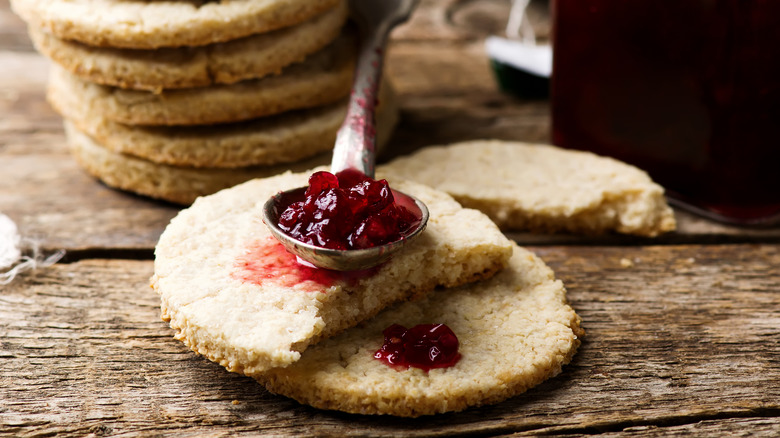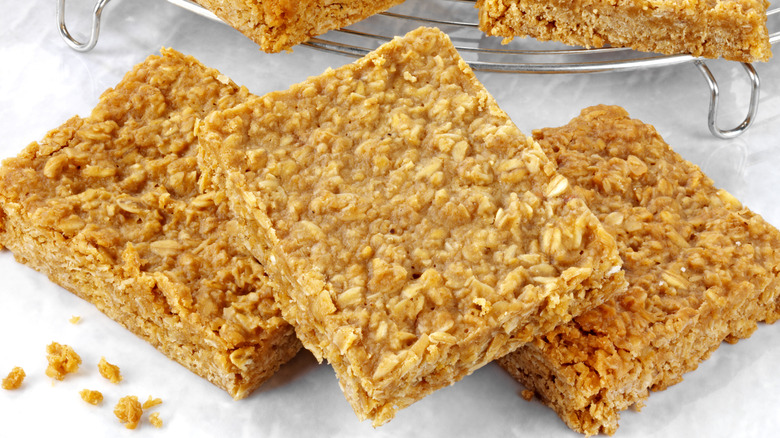The Sweet Way Oats Connect Nova Scotia And Scotland
When it comes to oats, the Scots know a thing or two. Throughout its multi-millennia history, oats have transformed from relatively flavorless animal fodder into an indispensable ingredient thanks, in no short part, to Celtic culture. Oats are believed to have arrived in the area we now know as Scotland during the Roman occupation of the present-day United Kingdom. Though primarily used for feeding cows and horses, the Scottish people soon discovered the use and utility of oats went far beyond simple animal nutrition. The Scots began cultivating oats for human consumption, connecting the grain with the Celtic people, via National Geographic UK.
Though oatmeal and porridge are the most well-known iterations of cooked oats, the staple grain of Scotland is far more adaptable than simple gruel. Oatcakes are a particular Scottish favorite. According to McKenzies Biscuits, Scottish oatcakes likely originated around the same time the grain was introduced. In later centuries, Highland warriors carried oats and a portable griddle as they traveled. For meals, soldiers would shape wetted oats into small, round cakes and cook them on a hot grill as you would pancakes. Today, oatcakes are a commodity sold across Scotland. However, the land of lochs and rolling hills is hardly the only place you can find these popular morsels. One needs only to look north to Nova Scotia for a taste of Celtic oatcakes on this side of the Atlantic.
Sweet and square
Although Nova Scotia has been host to numerous European settlers throughout its history, Celtic immigrants, particularly the Scottish, have had the most lasting cultural impact. After all, Nova Scotia is Latin for "New Scotland." The largest period of immigration came in the 18th and 19th centuries when Scottish immigrants arrived in their thousands, due in no short part to the Highland Clearances, which followed the Jacobite uprising, via Historic UK.
Nova Scotia shares a similar climate to Scotland in that it can often be cold and rainy. According to Oldways Old Grain Council, these are perfect oat-growing conditions. So, as the immigrating Scots settled into their new home, their favorite grain soon became embedded in Nova Scotian soil. As they had in Scotland, they made oatcakes, though the intervening decades saw the cakes change in character and shape.
According to The Spruce Eats, traditional Scottish oatcakes are round in shape, made with steel-cut oats, and tend to be on the savory side. By contrast, Nova Scotia oatcakes are typically sweeter, square-shaped, and made with rolled oats for a softer texture. Savory versions exist, though the sweeter ones are, the more preferred. Apparently, these oatcakes are so beloved by the people of Nova Scotia that they're a popular option at the local Tim Hortons (per The Canadian Jewish News). If that's not a success for Celtic culture in Canada, what is?

